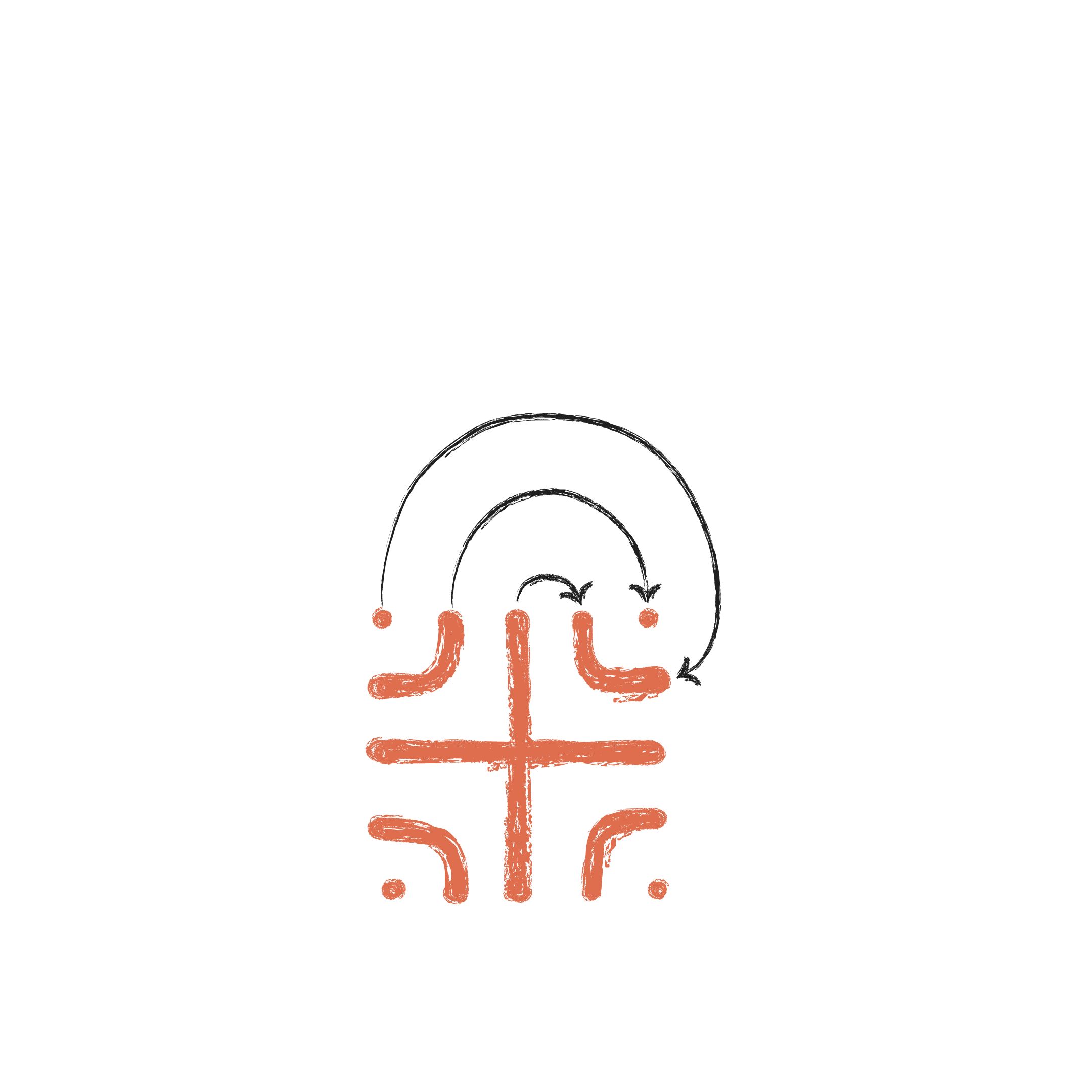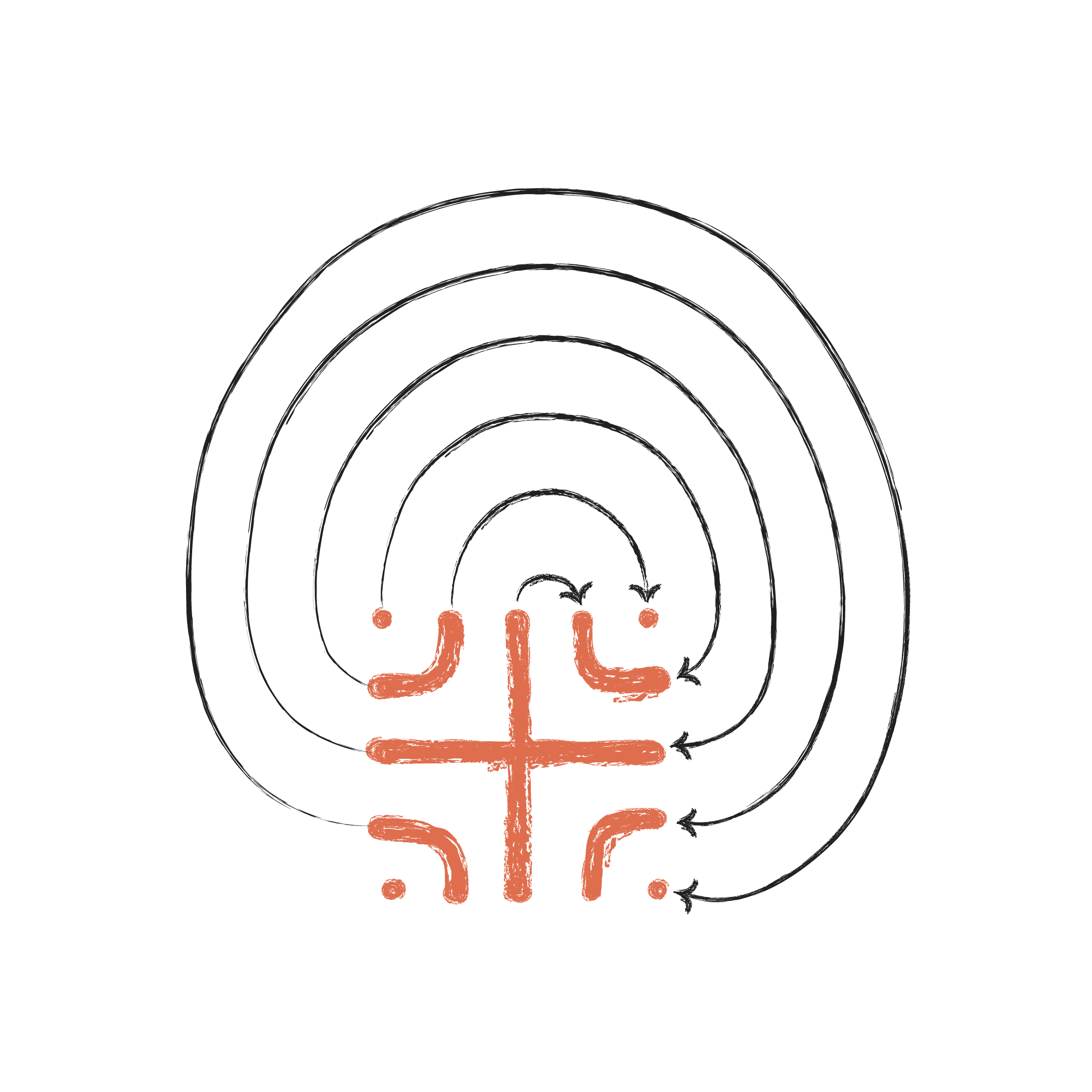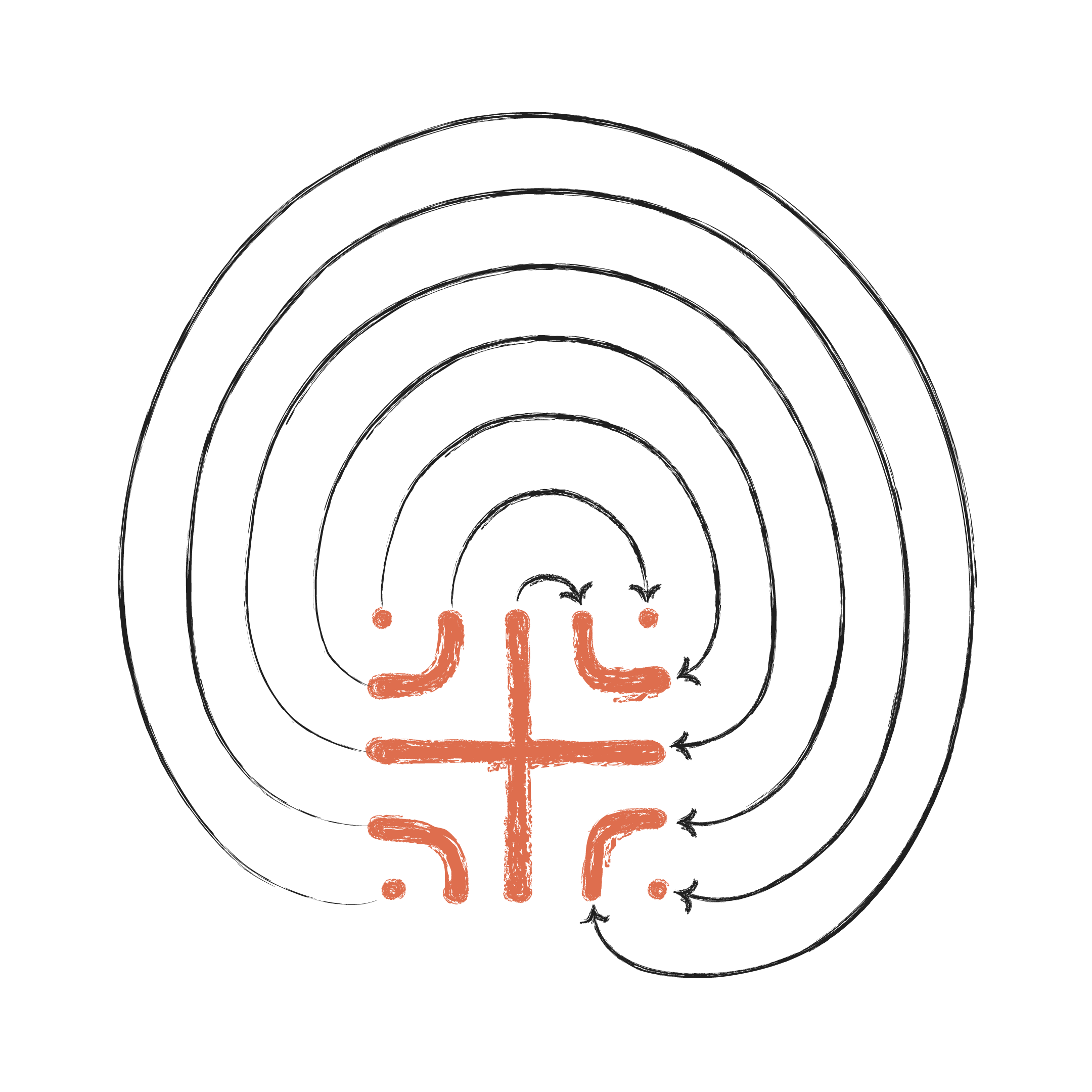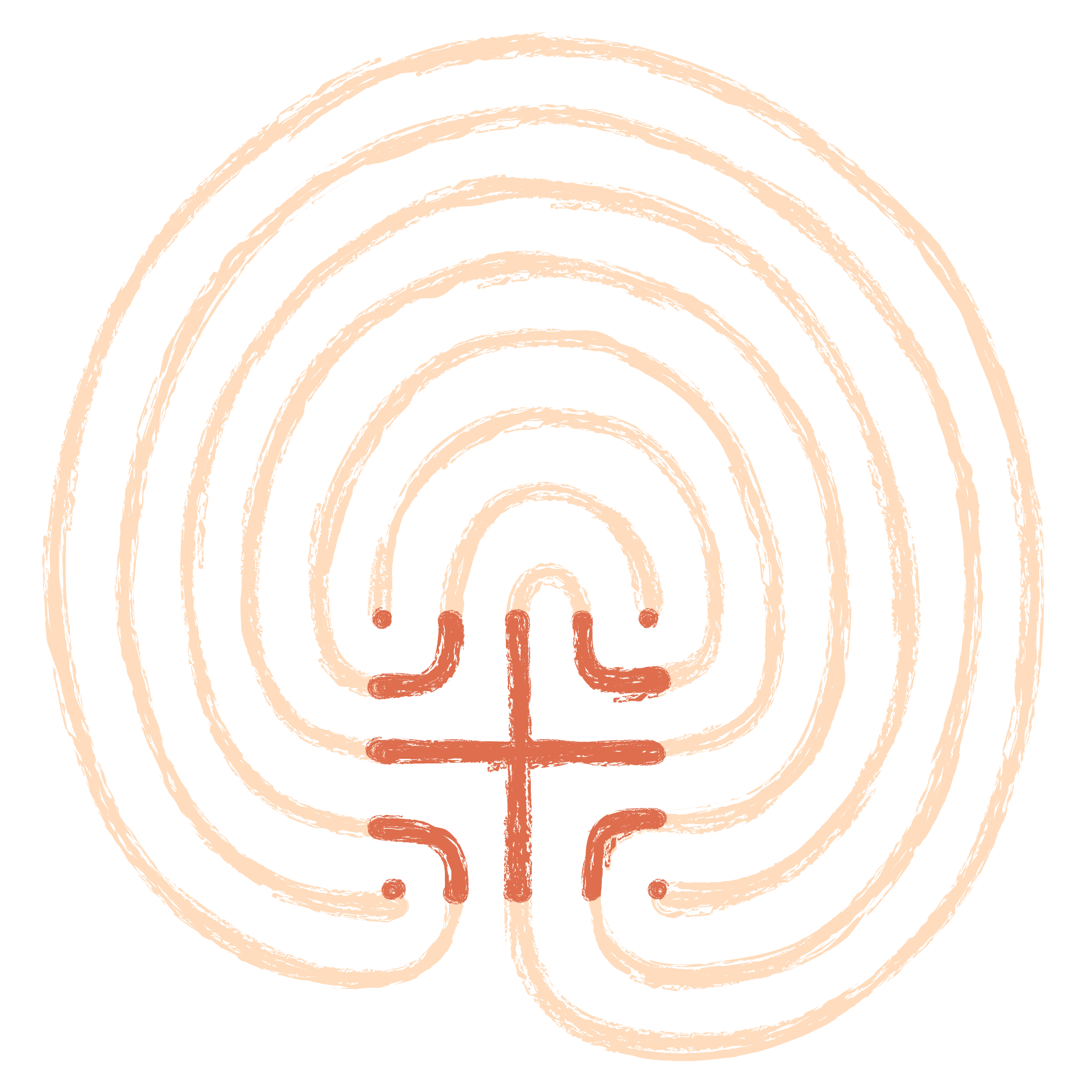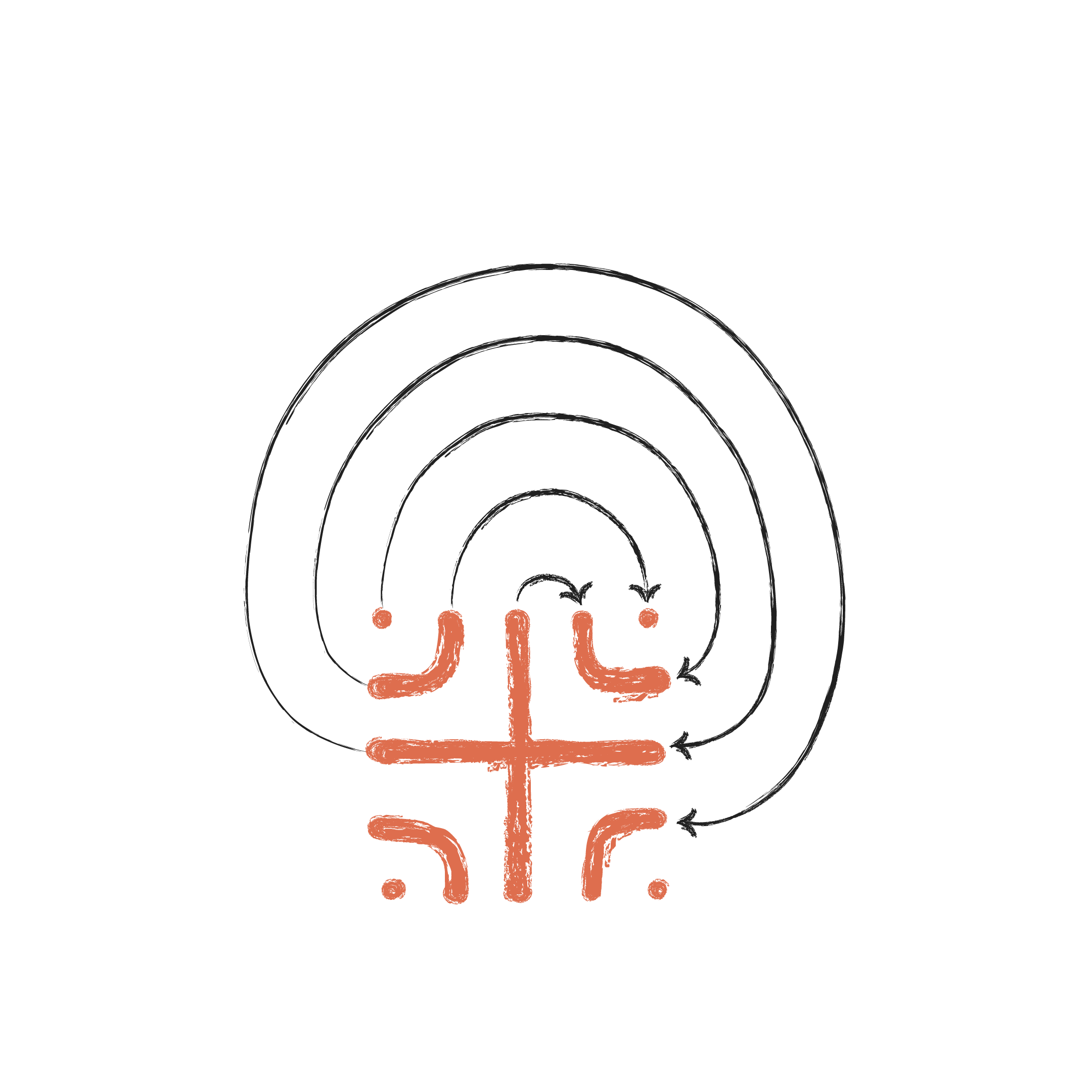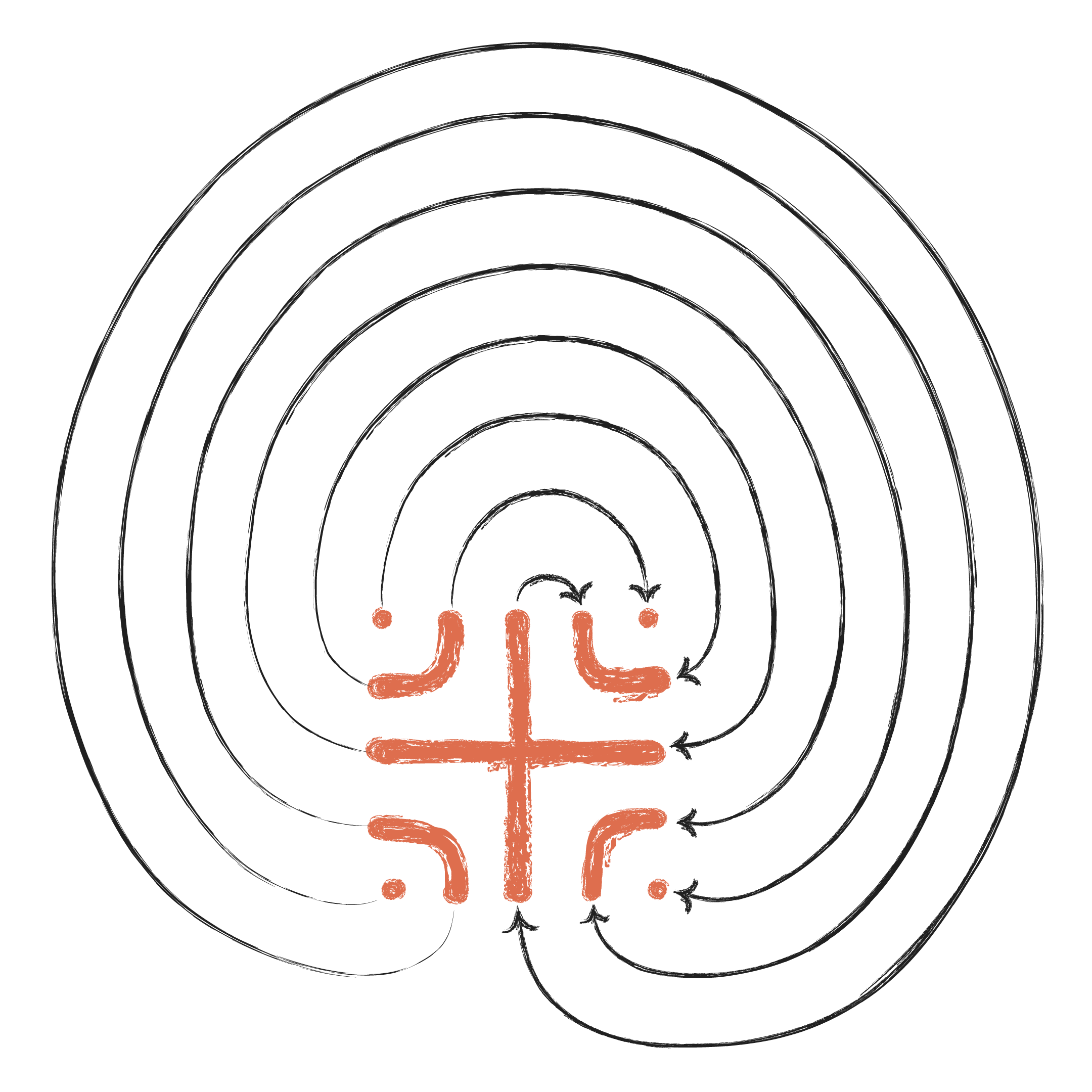
Exploring the
Labyrinth for Birth
A Map for Leading Labyrinth
You can save the document to your device by going to File > download.
The labyrinth can be understood as a universal map for any rite of passage or initiatory ordeal, regardless of its specific events and outcomes. In this metaphor, we often talk about the journey through the labyrinth towards the center as representing the ordeal of labor, the center as the birth of the baby and the path out as the postpartum return.
Often in childbirth preparation, the focus is primarily on the external (physiological and medical) events of birth, with not much emphasis on the internal events. The labyrinth process gives parents the opportunity to feel the uncertainty and disorientation of the internal experience of birth, as well as the determination required to move through that experience. By physically tracing the labyrinth, parents create a deep-seated memory of how to keep going within the unknown.
Tracing and walking labyrinths can affect how our brains work. It slows our brain waves, bringing them into the alpha/theta state that we find in meditation, story-listening, and other types of flow states – including deep labor. It also takes us out of a logical, information-processing state into a more intuitive, imaginative state. Offering this process to parents gives them an opportunity to experience this on a small scale in preparation for moving into those places in labor.
Time: 40-60 minutes, including drawing
Preparation:
Review the process in Ancient Map for Modern Birth (pgs. 201-206) and Labyrinth of Birth (pgs. 30-41).
Research labyrinths across cultures and throughout history. Memorize two or three examples; consider printing out images.
Make sure that you are able to draw a labyrinth yourself without referring to notes!
When to Offer:
This module can be taught in any session, but most BfW mentors tend to use it towards the beginning of their work with a parent or group of parents. It really sets the stage for the type of work you’ll be doing, and it also gives you a framework that you can continue referring to throughout your time together.
Supplies:
• Large art paper
• Boards to rest the paper on, especially if you are working on carpet. (It’s often helpful to clip or tape the paper to the boards.)
• Sheet/tapestry/drop cloth to protect the floor from pastel dust and stains.
• Soft chalk art pastels.
• White board or chart paper and markers.
• A bell or chime to ring parents in and out of the labyrinth.
Creating the space:
Before you begin, put down the protective cloth, distribute paper, boards, and chalks, and be sure that you are situated in a way that allows parents to see your demo drawing.
VALIDATE/MOTIVATE
Validate parents’ desire for a map that tells them exactly how to make their way through the birth experience, that tells them exactly what will happen in their birth experience, etc.
But it’s not possible to have a map with the external specifics of their particular birth experience beforehand – there are too many unknowns!
However, there IS a map of the internal experience of birth – one that will apply to any birth experience, regardless of the details and outcomes…
EDUCATE
A little bit of information about labyrinths across cultures/historical periods.
How a labyrinth differs from a maze. The external/medical map of birth is often maze-like, with dead ends and wrong choices; the internal experience follows the labyrinth. (Note that this distinction is not universal – it doesn’t exist in all languages. Even in English, it’s not absolutely incorrect to use the two words interchangeably. It’s a distinction that we are pointing out here because it’s useful for our understanding of birth.)
Other childbirth maps (smiley/sad face pain scale chart, cervical dilation model, Freidman’s curve, etc.), and how the labyrinth is different.
Every kind of birth fits in this map: fast and slow, medicated and unmedicated, surgical and spontaneous, etc. (You could also save this insight for the post-tracing discussion, when people have a more visceral sense of the labyrinth.)
INITIATE
Have parents choose two bright or dark colors of pastels: one to draw the seed, or the start of the labyrinth, and the other to draw the paths. Having two colors helps to see the next step, or to see where a mistake was made so it can be easily corrected.
Start with the seed. Remember to place it about two thirds of the way down the paper, centered from side to side. Set it up so that the lines are about a finger’s width apart. You draw it first, and then let them draw theirs.
Slowly draw the connecting lines one by one, explaining what you are doing, so parents can follow you.
Guide parents to draw a threshold marker in front of the labyrinth’s opening. The threshold of the labyrinth is the point at which we move from the known to the unknown, from preparation to ordeal, from ordinary life into laborland. Explain that their threshold marker can be a symbol – perhaps of themselves, their deepest desires or questions, the one thing they want to remember if everything else leaves them, the feeling that they want to bring into the experience, etc. You can draw a little symbol as an example – something simple, like a heart or a leaf, etc.
Guide parents to draw little footprints somewhere by the threshold marker. (You might tell them to place them as far away as they feel they are from entering their own labyrinthine journeys…) Explain that the footprints can symbolize where they are now, the fact that they came from somewhere, the fact that they are standing on the ground of everything they know before labor begins, a reminder that if they don’t know what to do next, all they need to do is look down at their feet and take the next step, etc.
Instruct parents that when you ring the bell, they can place their fingers on the footprints, and then, when they are ready, enter their labyrinths. You might tell them to take one (or two, or three) deep breaths once they reach the center, and then make their way out again. There are many variations available to you. You can ask parents to trace with their non-dominant hands. You can combine labyrinth tracing with Breath Awareness (or other pain-coping techniques) and/or ice-holding. You can have parents continue tracing in and out for several minutes. The more familiar you become with the process, the more free you will feel to experiment and play with it.
When everyone has completed their final outward tracing, ring the bell again.
DISCUSSION/SOLUTION FOCUSED DIALOGUE
Start the discussion with an open-ended question such as “What did you discover/experience/notice in the labyrinth?”
Help them connect their experiences with birth: “How might that be like birth?”
Draw their attention to their own coping/problem-solving: “So what did you do next?” “How did you know to do that?”
Consider using the labyrinth context to talk about the stages of labor.
Consider including the idea that postpartum may be its own labyrinth, either here or in the session when you discuss the postpartum journey. You might drop the nugget that it can take years to exit the postpartum labyrinth.
When appropriate, distinguish between the partner’s experience and the birthing person’s experience; be sure the partners understand that they will be walking their own labyrinth through the labor experience. (In fact, everyone present at the birth will be walking their own individual labyrinth.)
Emphasize that all that is needed to get through the labyrinth is to continue to take the next step forward.
Suggest ways to bring the labyrinth into their experience. They can take home the labyrinth they’ve made with you and put it on a wall. They can trace it with their fingers or eyes (a different experience) daily. They can trace it if they’re faced with a difficult medical decision, or if they’re experiencing physical discomfort, anxiety, etc. They can bring it or another labyrinth image to their birthing place. They can find a labyrinth in their community to walk now, and maybe again later with the baby. (And so on.)
End on thoughts along these lines: No matter how the unique journey of their labor may unfold, if they just keep going, keep taking one breath and one small step at a time, they will arrive at the center and then begin to make their journey back out again. They will do their best to meet each moment with what it is asking of them, and do the next best thing when they have to.



